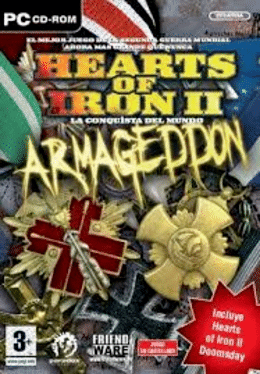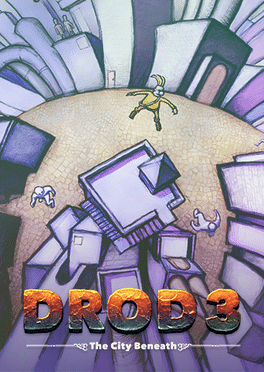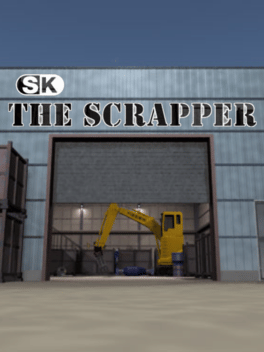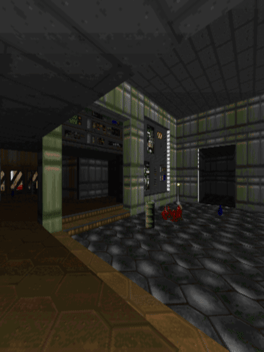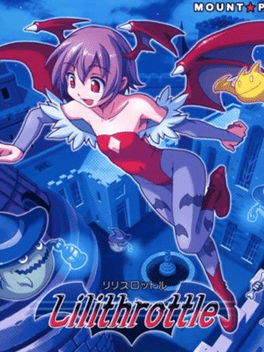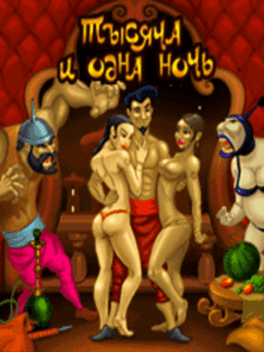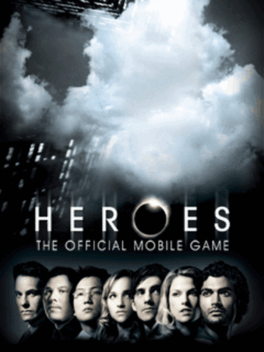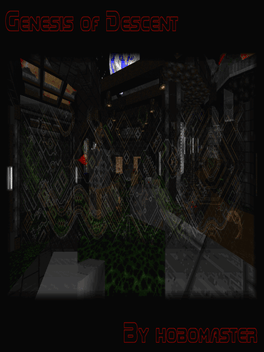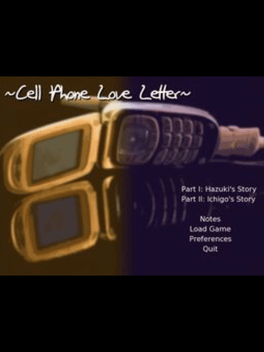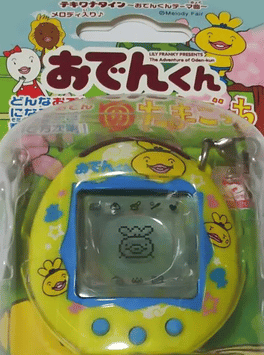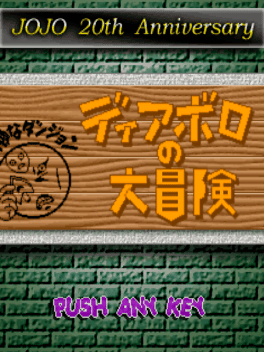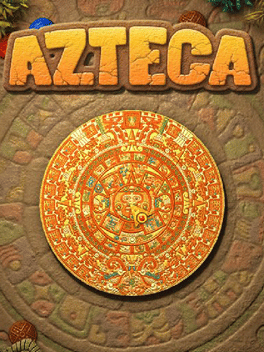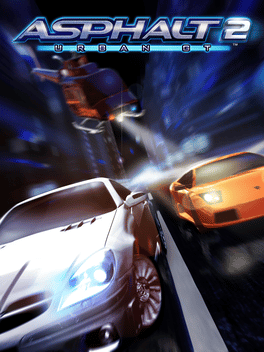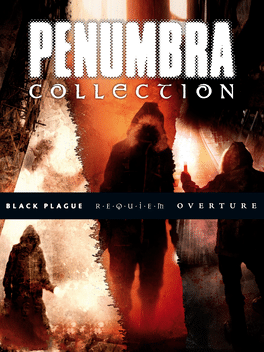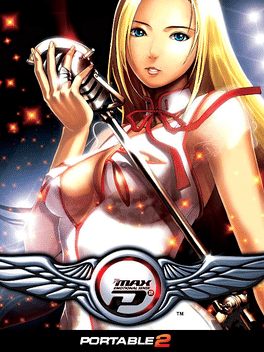New Games - Page 10143
-
Hearts of Iron II: Armageddon
2007
Hearts of Iron II: Armageddon is an alternate scenario expansion for Hearts of Iron II. It further allows more time and the player has the ability to choose 1964 as the end point. It allows the adding of modules to ships (such as improved radar, fire-control, anti-submarine or anti-aircraft weaponry) and submits two new scenarios for play, as well as an enhanced AI. Armageddon also features some other changes and additions such as: *Player can allow or disallow democracies to declare war on the main menu options screen *Player may choose when the time of play will end, ranging as early as 1940 to as late as 1964. *Player may choose to get the full industrial capacity of an annexed country, or not. *Player may choose to use tech teams of an annexed country or not. *New brigade attachments for ships. *Diplomatic option to refuse expeditionary forces from your allies -
DROD: The City Beneath
2007
You begin as a rather ugly man named "Beethro" who travels deep beneath the ground. There are other people down there too, citizens of a mysterious "Rooted Empire", that are carving tunnels and building things. Beethro just wants to know why, but it's hard to get a useful answer. He was always fond of saying "there is no problem that can't be solved with a really big sword," but upon arriving at the underground capital, Beethro is startled to find that nobody seems interested in attacking him. No, for some reason, they would rather persuade him to stand in a very long line. -
Diver Down
2007
-
The Scrapper
2007
The Scrapper
2007
The ninth game released by Gotmail, in collaboration with Sugiura Metals Company. This game was never translated into English. The player must solve a mystery in a scrapyard. -
The Act: An Interactive Comedy
2007
A rare fully animated game in the same vein as Dragon’s Lair. A man named Edgar seeks to woo a nurse named Sylvia who works at the hospital, the same site where he is washing windows. -
Pokémon Sky Stacker
2007
Pokémon Sky Stacker
2007
The aim of each level is to reach the top of the screen by stacking blocks on top of each other. -
Wonderful Doom
2007
Wonderful Doom
2007
Wonderful Doom is a 2007 megawad for The Ultimate Doom created by Eugene Guschin (Wraith777), containing 36 levels created in the style of the original levels. -
Lilithrottle
2007
Lilithrottle
2007
Lilithrottle is a doujin game based on one of the characters from the Darkstalkers (otherwise known as Vampire) series, Lilith Aensland and made by Mount Punch. It is a platformer game where you must collect enough items to exit the stage. -
One Thousand and One Nights
2007
This game tells the story of the breathtaking adventures of the eastern Don Juan whose name is Habib in the gorgeous sultan's palace full of beautiful concubines, guards and treasures. -
Heroes: The Official Mobile Game
2007
Join Hiro, Niki, Peter and more in the official, exclusive game of TV's most talked-about series, Heroes, and experience the show's mind-bending universe on your mobile phone. Relive the series' thrills by entering an epic game that chronicles the lives of ordinary people who discover they possess extraordinary abilities - and an ultimate destiny to save the world! Experience the excitement of super-human abilities as you sneak into places unnoticed, save lives and fight enemies with astounding skill. -
Genesis of Descent
2007
Genesis of Descent
2007
A large map for the original Doom that uses a huge amount of scripting and ZDoom features while attemptimg to retain classic and fast paced Doom action. -
Cell Phone Love Letter
2007
Romance visual novel by Love Conquers All Games. Cell Phone Love Letter was scripted entirely in Ren'Py, as an entry in 2007's NaNoRenO. It's a short non-branching visual novel. -
Oden-kun Tamagotchi
2007
Oden-kun Tamagotchi
2007
The Oden-kun Tamagotchi is a licensed Tamagotchi released in Japan in March 2007. It is based on the Lily Franky TV show Oden-kun, which ran from August 4, 2005 to February 27, 2009. -
Diavolo no Daibouken
2007
Diavolo no Daibouken
2007
Diavolo no Daibouken is a free Japanese fangame based off the manga JoJo's Bizarre Adventure. It is a simplistic graphical roguelike that stars Diavolo, the main villain of part 5 of the manga. -
Azteca
2007
Azteca
2007
Azteca is a captivating puzzle game that challenges your strategic thinking and precision as you match and burst vibrant bubbles in a mesmerizing Aztec-themed setting. Immerse yourself in the rich tapestry of ancient civilizations while navigating through intricate levels filled with colorful orbs, each pop bringing you closer to unlocking the secrets of the Aztecs. -
Jets'n'Guns Gold
2007
Jets'n'Guns Gold
2007
star 7.8Jets'n'Guns Gold is an enhanced version of the original game. It offers increased screen resolution (800x600), the text-only mission briefings were replaced with comic story screens, other new features include 7 new customizable ships, 70 new enemies including new bosses, 21 new levels in the main campaign (meaning the game now has twice as many levels as the original), 17 new weapons, bonus items, and many other improvements. The original soundtrack by the metal band Machinae Supremacy was also extended with 6 new songs. Jets'n'Guns is a heavy piece of ground shaking rock blasting action with graphics and special effects that will blow you eyes out! Enjoy yourself in almost-insane action adventure of saving the universe from the deadly threat of more than 270 unique monsters in the campaign of 43 levels. Stand as one-against-many armed with tons of different weapons of a devastating armament fitted into one of the awesome spaceships. Game features: 43 levels full of thrilling action, shooting and demolition more -
Asphalt: Urban GT 2
2007
Asphalt: Urban GT 2
2007
star 4Get ready to rev your engines and hit the streets in Asphalt: Urban GT 2 for the PSP! This high-octane racing game offers an adrenaline-pumping experience with a wide array of cars and motorcycles from some of the most prestigious manufacturers in the world. Race through exotic locations around the globe, from the neon-lit streets of Las Vegas to the bustling avenues of Tokyo. With a variety of game modes, including Career, Instant Play, and Multiplayer, Asphalt: Urban GT 2 caters to all types of racers. Customize your vehicles with a plethora of tuning options to improve performance and aesthetics, ensuring you stand out on the track. The game’s stunning graphics and realistic sound effects immerse you in a world where speed and style reign supreme. Challenge yourself with different race types such as Cop Chase, where you evade law enforcement, and the thrilling Road Challenge, competing against tough opponents. Whether you're a casual player or a hardcore racing enthusiast, Asphalt: Urban GT 2 offers an exhil -
The Penumbra Collection
2007
The Penumbra Collection is a first person horror adventure focusing on story, immersion, and puzzle solving. You'll be on edge like never before as you explore bizarre and mysterious environments, the unknown waiting for you behind every corner. The world is detailed both in terms of graphical fidelity and narrative character - the Penumbra Collection is a horrific experience that will grip players from its opening thrills to it chilling denouement. -
DJMax Portable 2
2007
DJMax Portable 2
2007
DJ Max Portable 2 introduces one more gameplay mode and offers a song selection of more than 60 tunes. In the new Fever Mode, you fill up your Fever ability which, when activated, speeds up the notes and applies a 2x score multiplier. By filling up yet another Fever, you can activate it again for a 3x multiplier, so on and so forth.

